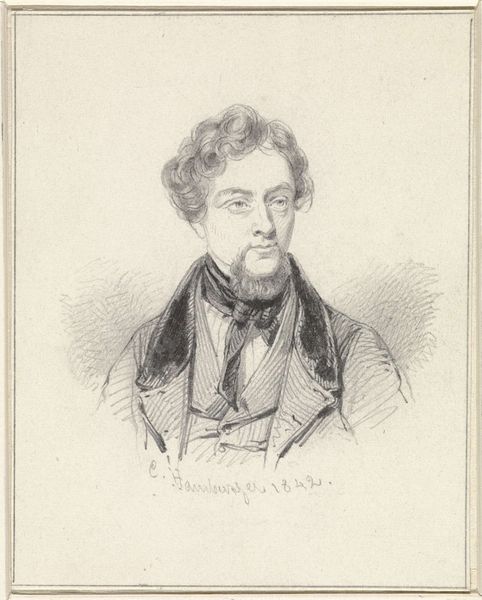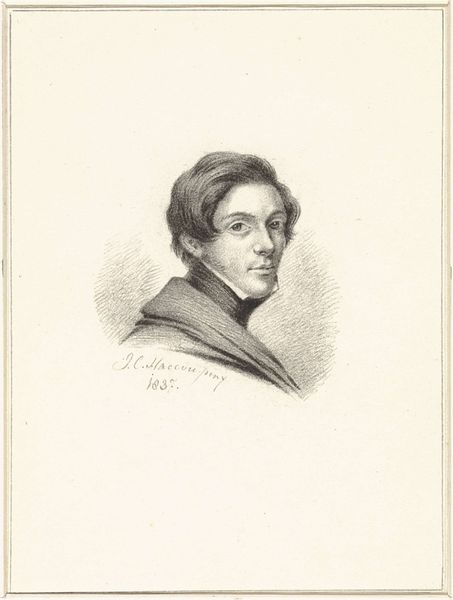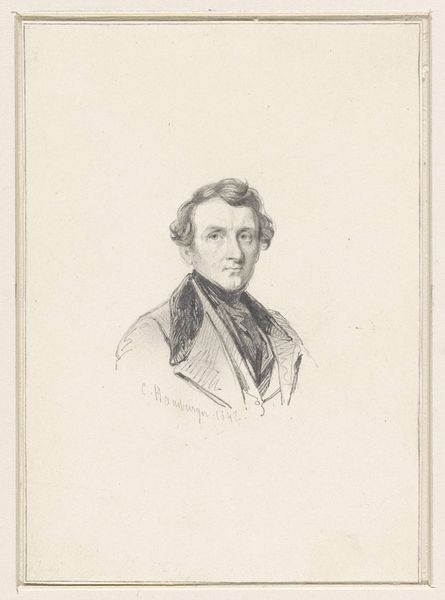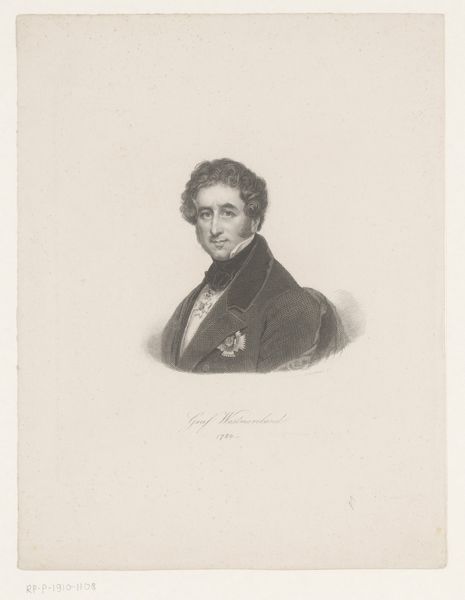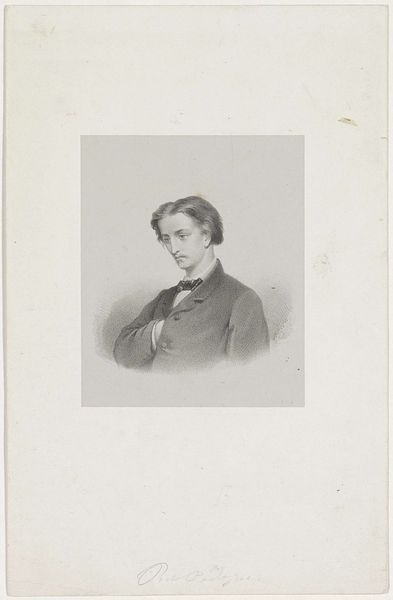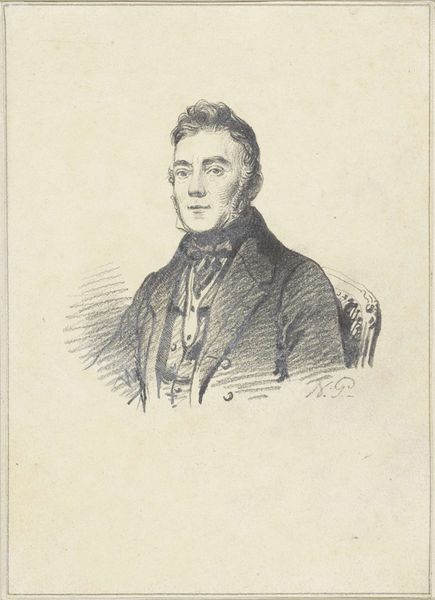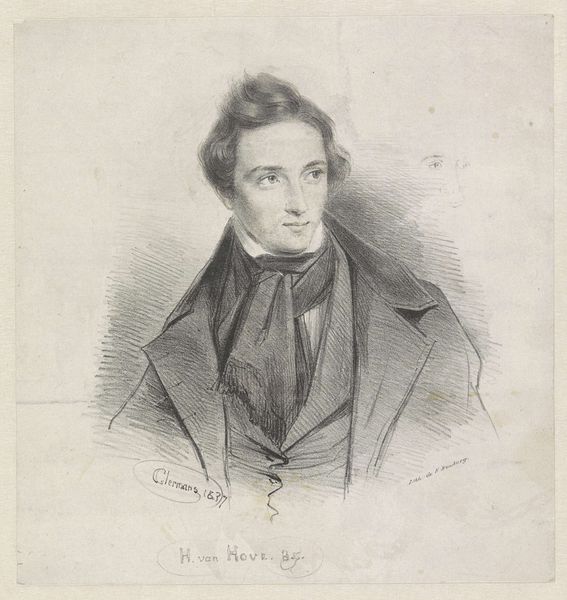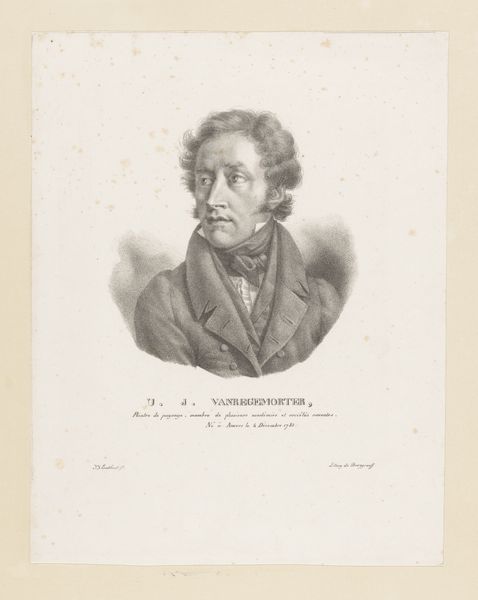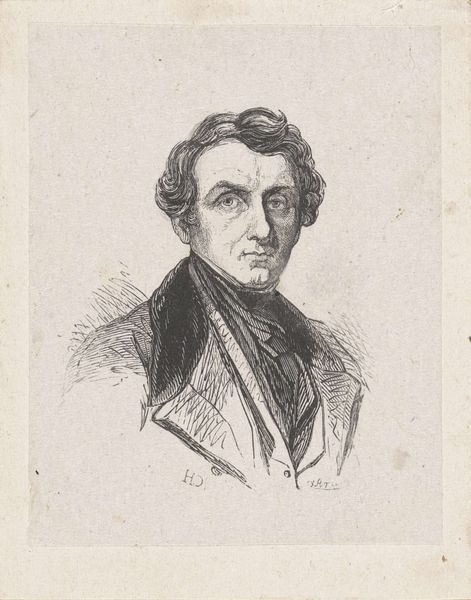
drawing, graphite
#
portrait
#
drawing
#
charcoal drawing
#
pencil drawing
#
graphite
#
portrait drawing
#
academic-art
#
graphite
#
realism
Dimensions: height 402 mm, width 300 mm
Copyright: Rijks Museum: Open Domain
Editor: Here we have Henricus Wilhelmus Couwenberg's "Portret van Johannes Bernardus van Bree," created in 1836. It's a drawing using graphite and other materials, and the detail is astonishing. The subject's gaze is directed slightly upward and to the side, as though caught in contemplation. How do you interpret this work, considering its time? Curator: Considering this was made in 1836, the artist paints Johannes Bernardus van Bree at a time of shifting social roles and emerging national identities. Van Bree, as a prominent musician, occupied a space where artistic expression and public life intersected. Consider how portraits were often tools for constructing and reinforcing social hierarchies. Does this portrait challenge or uphold those norms? Editor: That's interesting! I hadn't thought about the construction of identity. It does feel very stately, perhaps even aspirational. Does the medium – a drawing rather than a painting – change its potential impact? Curator: Absolutely. Drawings, though capable of incredible detail as you pointed out, can often carry a different weight than painting. Drawings can signal intimacy, immediacy or perhaps a more direct, unvarnished representation. Does this lend itself to democratization, capturing something about van Bree’s character beyond mere status? Think about how the academic style inflects meaning too. Is it being deployed here to elevate or humanize him, or both? Editor: I see what you mean. It's a delicate balance. So, viewing this through the lens of social and historical context really opens up new ways of thinking about portraiture. Curator: Precisely. By considering these factors, we can unpack the layers of meaning embedded within seemingly simple representations. Hopefully you now understand the work is actively participating in constructing meaning, reflecting and shaping its cultural milieu. Editor: Definitely! It's given me a lot to consider about the relationship between art, identity, and society. Thanks!
Comments
No comments
Be the first to comment and join the conversation on the ultimate creative platform.
